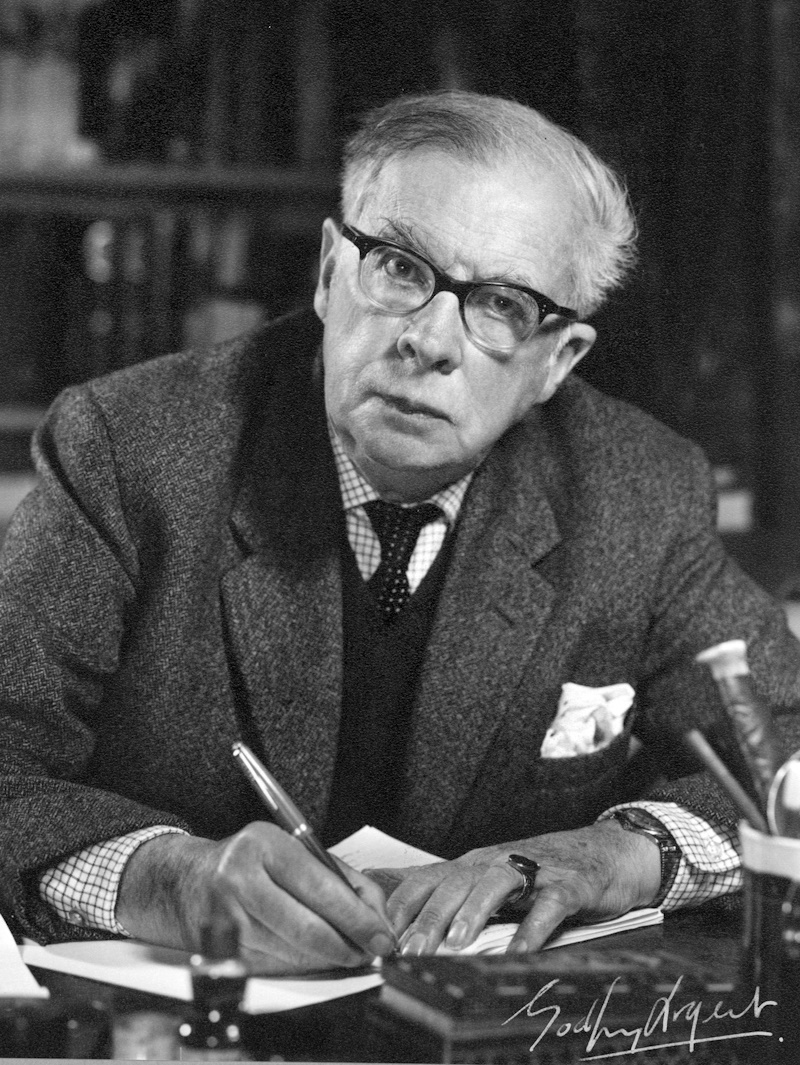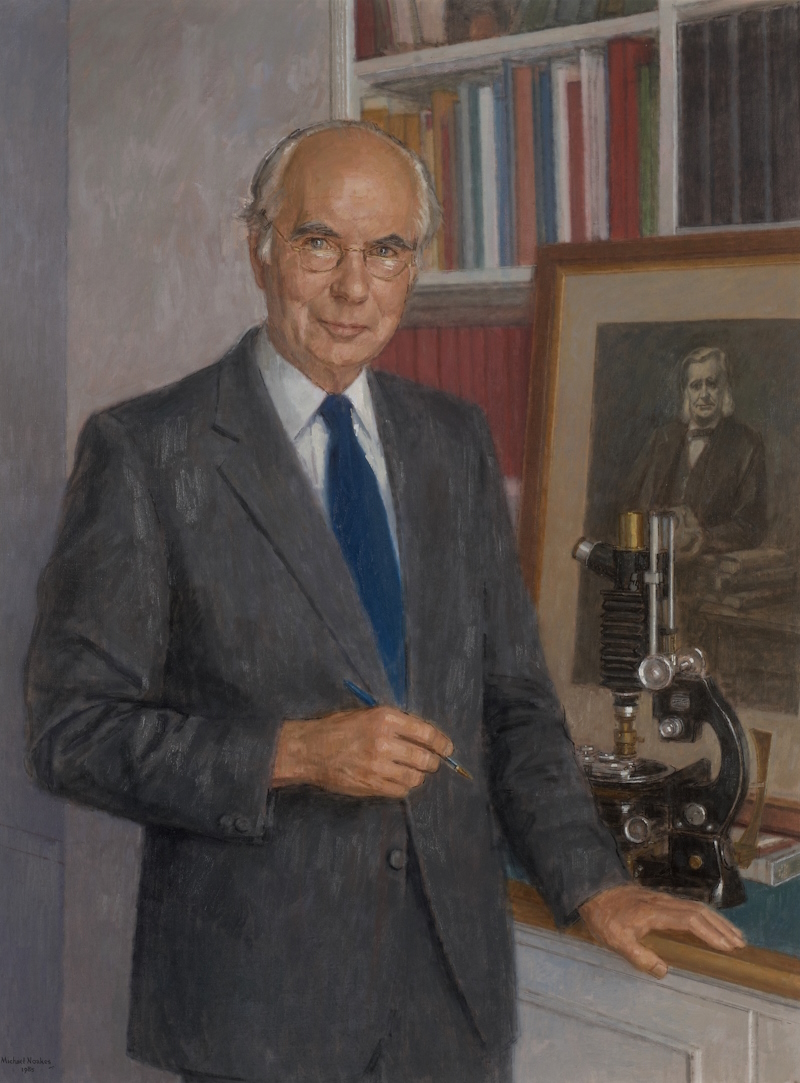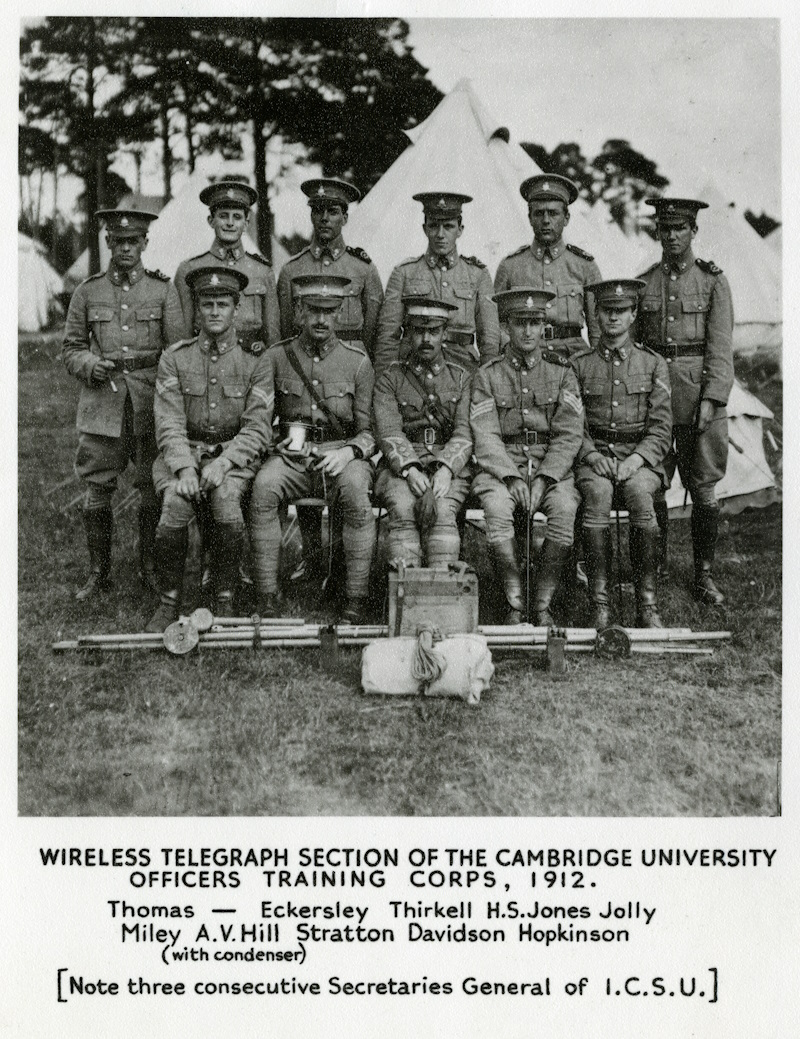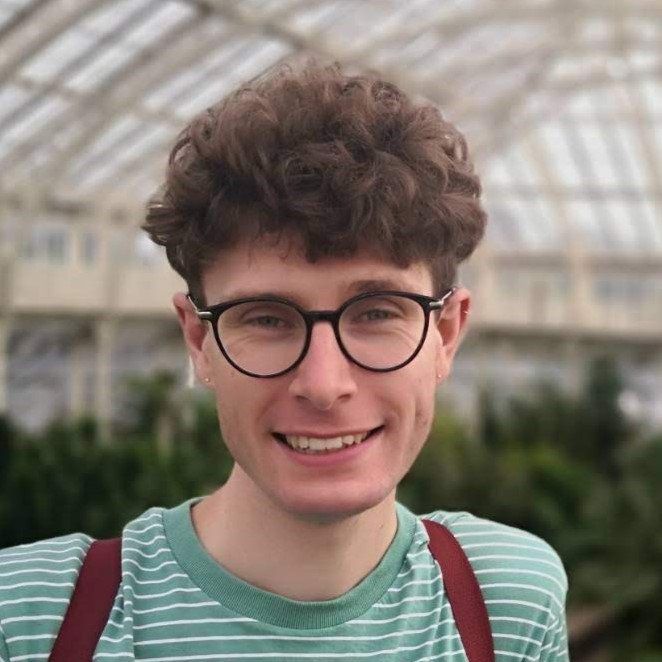The scientific influence of Thomas Henry Huxley FRS reappears throughout the lives of his children and grandchildren, as Ainsley Vinall discovers.

We recently received our portrait of Thomas Henry Huxley FRS (1825-1895) back at the Royal Society after its canvas and frame had been separated and each sent away for conservation.
The newly cleaned painting shows Huxley sitting at his desk, pen in hand. His desktop is cluttered with papers and a vast bookcase can be seen behind him, perhaps representing his multitude of interests. A self-taught biologist and anatomist, Huxley also dabbled in philosophy, biblical scholarship, classical languages and illustration. The portrait was painted in 1891 by John Collier, Huxley’s son-in-law.
Huxley was principally a biologist and science educator, and a strong advocate of Charles Darwin FRS (1809-1882). Known as ‘Darwin’s Bulldog’, he coined the term ‘Darwinism’, and was very active in the Royal Society: he served as Secretary from 1872 to 1881 and then President from 1883, standing down two years later due to ill health. A paper read in his absence in December 1884 records the ‘timely retirement from arduous work which has been enforced upon him by his medical advisers’. He did not fully retire, though, and continued to write Referees’ Reports into the 1890s.
 Portrait of T H Huxley by John Collier, 1891 (P/0076)
Portrait of T H Huxley by John Collier, 1891 (P/0076)
The provenance of this portrait reveals stories about T H Huxley’s descendants (family tree here – you might need it!) and the impact his reputation had on them. His scientific influence, as well as his interest in art and literature, reappears throughout the lives of his children and grandchildren. Marian Huxley, Thomas’s daughter and John Collier’s first wife, was encouraged by her father to pursue art. She studied at the Slade School of Fine Art, from where Collier had also graduated, and went on to exhibit regularly at the Royal Academy. Her delightful drawing in the National Portrait Gallery shows Huxley nodding off whilst sitting down in the evening; she also completed an oil portrait of him, now in the Science Museum collection.
However, Marian began to experience mental distress shortly after her daughter Joyce was born in 1884. She briefly recovered but became unstable again in autumn 1887, prompting Collier to take her to Paris for treatment. Soon after starting a programme with pioneering neurologist Jean-Martin Charcot, Marian contracted pneumonia and died that December. Her father was distraught and poured himself into his work, writing about the fragility of the human condition in The Struggle for Existence in Human Society (1888).
Somewhat scandalously, John Collier then married Marian’s younger sister Ethel Huxley in 1889. As this was illegal in the UK at the time, T H Huxley had to take his daughter to Norway where the wedding could take place. Ethel was reportedly pleased with the arrangement and, as Collier’s not-quite-wife, aimed to take full advantage of their unorthodox situation. On one occasion she marched into the Tax Office at Somerset House to demand her husband’s income be removed from her tax calculation, as UK law supposedly did not recognise their marriage.
The Royal Society has held this painting of T H Huxley since 1976, originally on loan from his grandson Sir Laurence Collier, John and Ethel’s son. It was purchased from Laurence’s son William in 1981. It previously hung above the mantelpiece in the Collier family home, where John could point it out to visitors and remark upon his fondness for his two-time father-in-law. It is one of a number of portraits Collier painted of Huxley to adorn the family homes. Another example is at the National Portrait Gallery, having been presented by Henry Huxley (1865–1946), another of T H’s sons.
Ronald Clark, in his collective biography The Huxleys, noted how ‘in most Huxley homes there was at least one portrait of T H in his prime, looking down in benevolent regard from the walls, metaphorically saluted at sun-up and sun-down like the Union flag’. These portraits strengthened his image as the ideal polymath scientist and inspired the family to follow his legacy. This was evidently effective, as three of his grandsons went on to become Fellows of the Royal Society too.
T H’s son Leonard, not himself a scientist but an educator and writer, was fiercely proud of his father and produced biographies of numerous Fellows of the Royal Society including Huxley, Darwin and Joseph Dalton Hooker (1817-1911). Julian Huxley FRS (1887-1975), son of Leonard and his first wife Julia Arnold, followed in his grandfather’s footsteps as an evolutionary biologist (although he was also a proponent of eugenics). He was elected a Fellow in 1938 for his ‘contributions in Experimental Zoology and Genetics’; he later received the Darwin Medal in 1956.
 Julian Huxley by Godfrey Argent, c.1960 (IM/GA/AR/6756)
Julian Huxley by Godfrey Argent, c.1960 (IM/GA/AR/6756)
Julian’s younger brother Aldous Huxley, the author of Brave New World (1932) and The Doors of Perception (1954), is probably the most famous member of the Huxley family. Like his grandfather, Aldous was interested in drawing, botany and philosophy. He might have pursued a medical or scientific career like his brother, had an eye disease not greatly affected his eyesight; instead, he became one of the best-known authors of the twentieth century.
After Julia died in 1908, Leonard Huxley, father of Aldous and Julian, married Rosalind Bruce. One of their sons, Sir Andrew Fielding Huxley FRS (1917-2012), followed his grandfather and half-brother into the fields of biology and physiology. He was elected a Fellow of the Royal Society in 1955 for his study of the central nervous system and shared the 1963 Nobel Prize in Physiology or Medicine for work on nerve fibres. Like his grandfather, Andrew was also very active in the Royal Society, and after many years serving on Council was elected President in 1980.
 Sir Andrew Huxley alongside a print of Thomas Henry Huxley, by Michael Noakes, 1985 (P/0179)
Sir Andrew Huxley alongside a print of Thomas Henry Huxley, by Michael Noakes, 1985 (P/0179)
The third of T H Huxley’s grandsons to be elected a Fellow was Thomas Eckersley (1886-1959), son of Rachel Huxley, the fifth of Huxley’s eight children. Although he did not bear his grandfather’s surname, Eckersley inherited much of Huxley’s intellectual curiosity and pioneering spirit. He studied magnetic fields at the National Physical Laboratory before joining a government survey in Egypt establishing wireless communications, becoming the first commander of a camel-borne wireless unit! He was elected to the Fellowship in 1938 for his work on wireless telegraphy and was later awarded the Faraday Medal from the Institution of Electrical Engineers.
 Cambridge University Wireless Telegraphy Corps, 1912. Thomas Eckersley is third from the left in the back row (IM/005633)
Cambridge University Wireless Telegraphy Corps, 1912. Thomas Eckersley is third from the left in the back row (IM/005633)
As well as being depicted in numerous paintings and photographs, a statue of T H Huxley was created for the Natural History Museum shortly after his death. When this was unveiled in April 1900, the family gathered for the ceremony. Julia and Leonard brought their two young boys, and at one point Julian heard his mother urgently whispering to pass his top hat over to his brother Aldous, who, overcome by the significance of the moment, was about to be sick. When we rehang our portrait at Carlton House Terrace later this year, I’m hoping it won’t inspire quite such a physical reaction!







